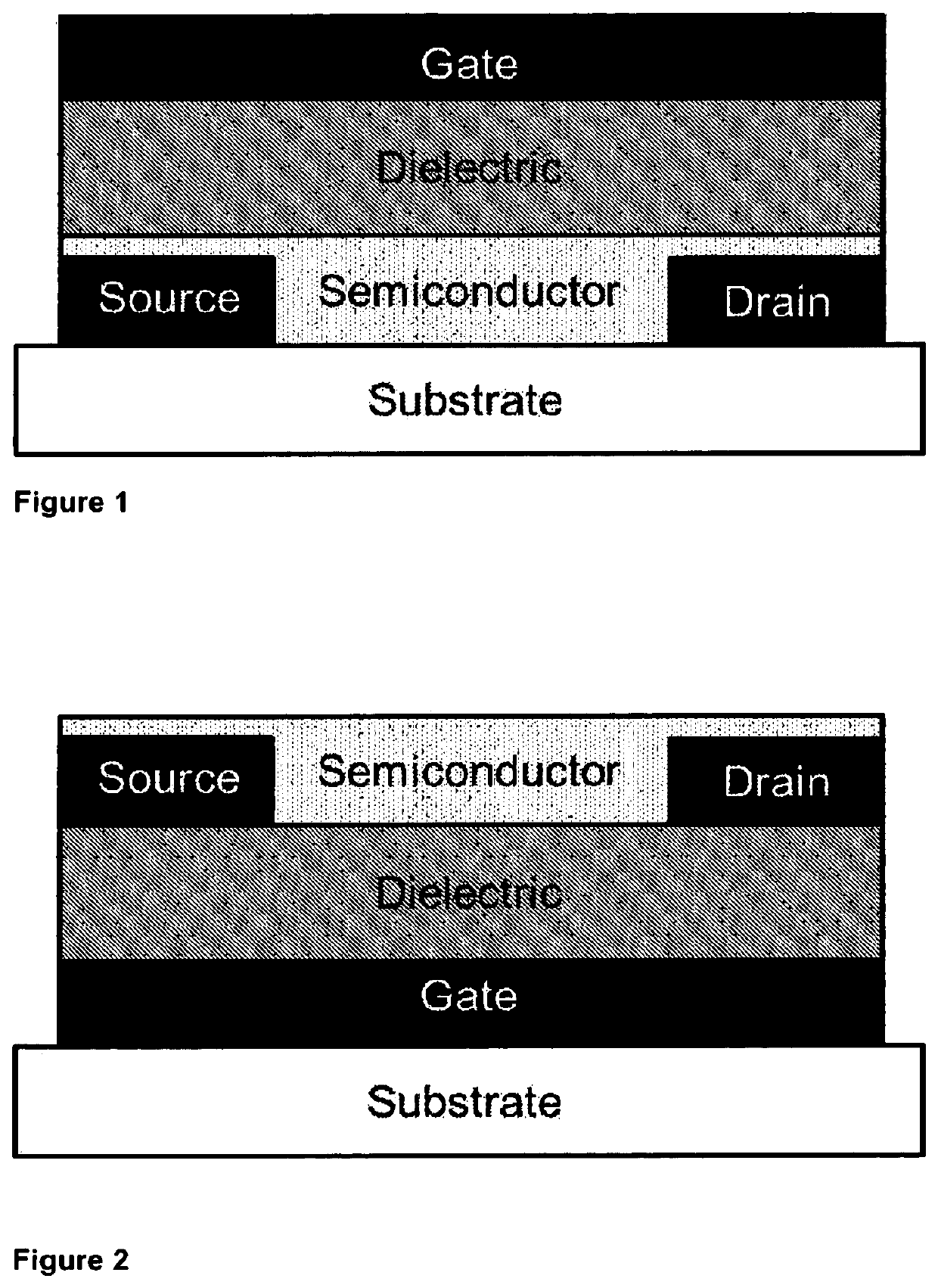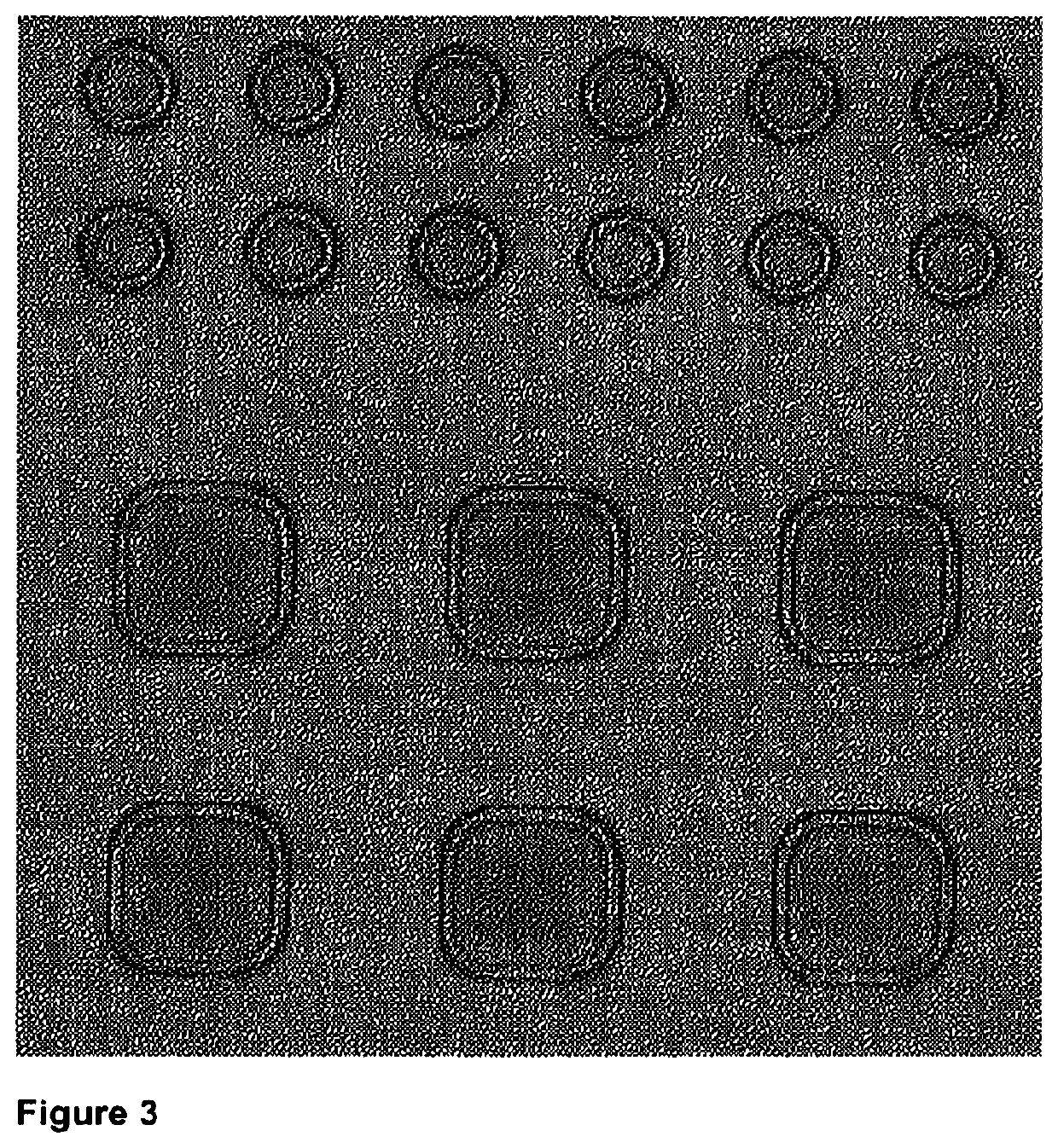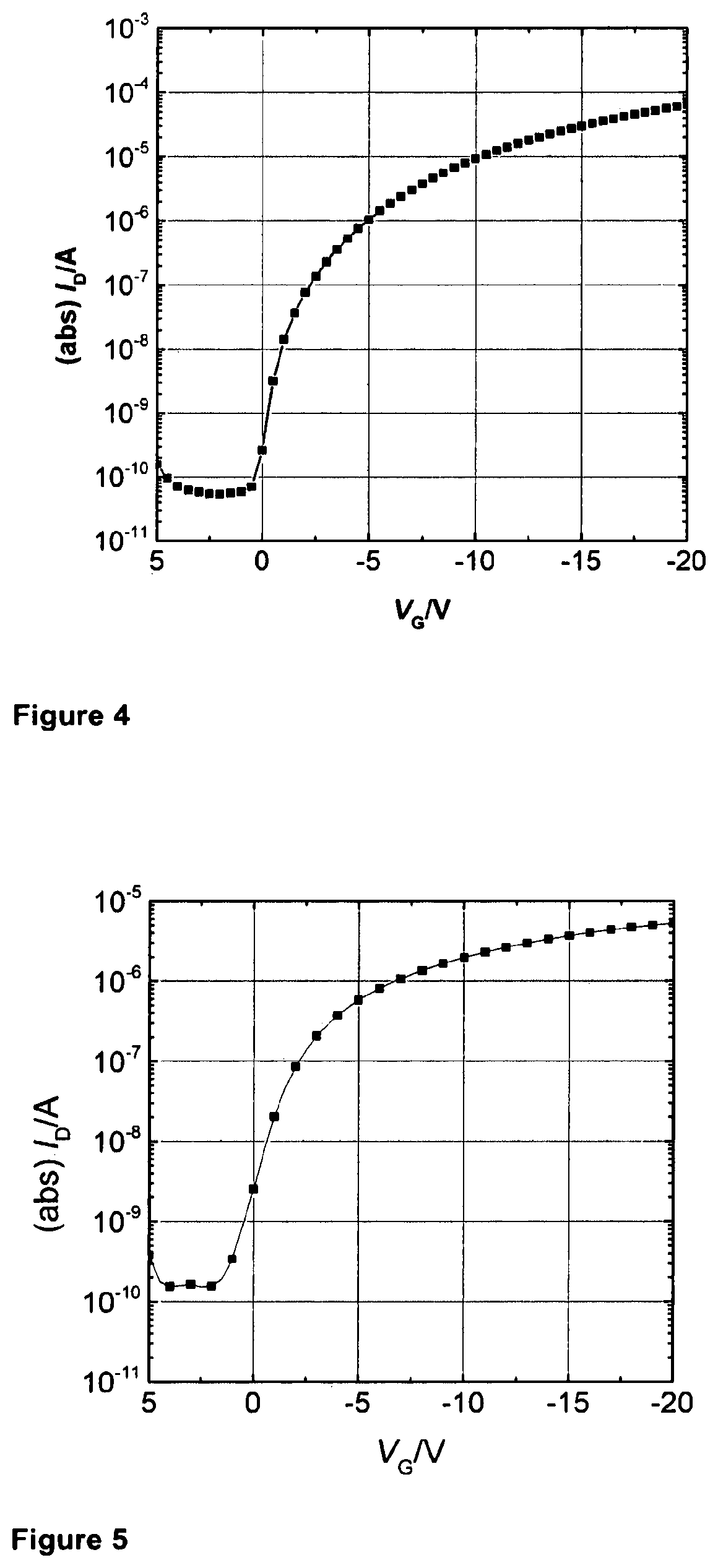Crosslinkable polymeric materials for dielectric layers in electronic devices
a technology of electronic devices and polymeric materials, applied in semiconductor devices, solid-state devices, capacitors, etc., can solve the problems of inability to cure dielectric layers in ofet devices, inability to apply incompatible solvents, and inability to meet the requirements of uv-cured dielectric layers
- Summary
- Abstract
- Description
- Claims
- Application Information
AI Technical Summary
Benefits of technology
Problems solved by technology
Method used
Image
Examples
example a1 preparation
of Polymer 1
[0116]Using a syringe technique, 20 ml of freshly distilled dicyclopentenyloxyethyl methacrylate (FA-512M, Hitachi Chemical) and 20 ml of THF were transferred under argon into a two-necked flask. Then 30 mg of 2,2′-azobisisobutyronitrile in the form of a THF solution were added, and the mixture was heated to 60° C. with stirring. After six hours, the reaction was discontinued by addition of 50 mg of butylated hydroxytoluene (BHT) and cooling to room temperature. The polymerization solution was precipitated from 1000 ml of methanol, and the polymer was isolated by filtration and dried under reduced pressure. The polymer was then dissolved again three times in 100 ml of THF and precipitated from 800 ml of methanol with addition of 20 mg of BHT each time.
[0117]Yield 20.2%
[0118]Mn=219 000 g / mol, Mw=520 000 g / mol
[0119]Tg=61° C.
example a2 preparation
of Polymer 2
[0120]Using a syringe technique, 20 ml of freshly distilled dicyclopentenyl methacrylate (CD535, Sartomer) and 20 ml of THF were transferred under argon into a two-necked flask. Then 40 mg of 2,2′-azobisisobutyronitrile in the form of a THF solution were added, and the mixture was heated to 50° C. with stirring. After ten hours, the reaction was discontinued by addition of 50 mg of butylated hydroxytoluene (BHT) and cooling to room temperature. The polymerization solution was precipitated from 1000 ml of methanol, and the polymer was isolated by filtration and dried under reduced pressure. The polymer was then dissolved again three times in 100 ml of THF and precipitated from 800 ml of methanol with addition of 20 mg of BHT each time.
[0121]Yield 18.5%
[0122]Mn=89 600 g / mol, Mw=237 000 g / mol
[0123]Tg=178° C.
example a3 preparation
of Polymer 3
[0124]Using a syringe technique, 10 ml of freshly distilled dicyclopentenyloxyethyl methacrylate (FA-512M, Hitachi Chemical), 10 ml of freshly distilled methyl methacrylate and 40 ml of THF were transferred under argon into a two-necked flask. Then 30 mg of 2,2′-azobisisobutyronitrile in the form of a THF solution were added, and the mixture was heated to 50° C. with stirring. After eight hours, the reaction was discontinued by addition of 50 mg of BHT and cooling to room temperature. The polymerization solution was precipitated from 1000 ml of methanol, and the polymer was isolated by filtration and dried under reduced pressure. The polymer was then dissolved again three times in 100 ml of THF and precipitated from 800 ml of methanol with addition of 20 mg of BHT each time.
[0125]Yield 35%
[0126]Mn=87 700 g / mol, Mw=317 000 g / mol
[0127]Tg=94° C.
[0128]Repeating units in the polymer: FA-512M / MMA ratio 28:72 (determined via 1H-NMR)
PUM
| Property | Measurement | Unit |
|---|---|---|
| percent by mass | aaaaa | aaaaa |
| percent by mass | aaaaa | aaaaa |
| reaction time | aaaaa | aaaaa |
Abstract
Description
Claims
Application Information
 Login to View More
Login to View More - R&D
- Intellectual Property
- Life Sciences
- Materials
- Tech Scout
- Unparalleled Data Quality
- Higher Quality Content
- 60% Fewer Hallucinations
Browse by: Latest US Patents, China's latest patents, Technical Efficacy Thesaurus, Application Domain, Technology Topic, Popular Technical Reports.
© 2025 PatSnap. All rights reserved.Legal|Privacy policy|Modern Slavery Act Transparency Statement|Sitemap|About US| Contact US: help@patsnap.com



